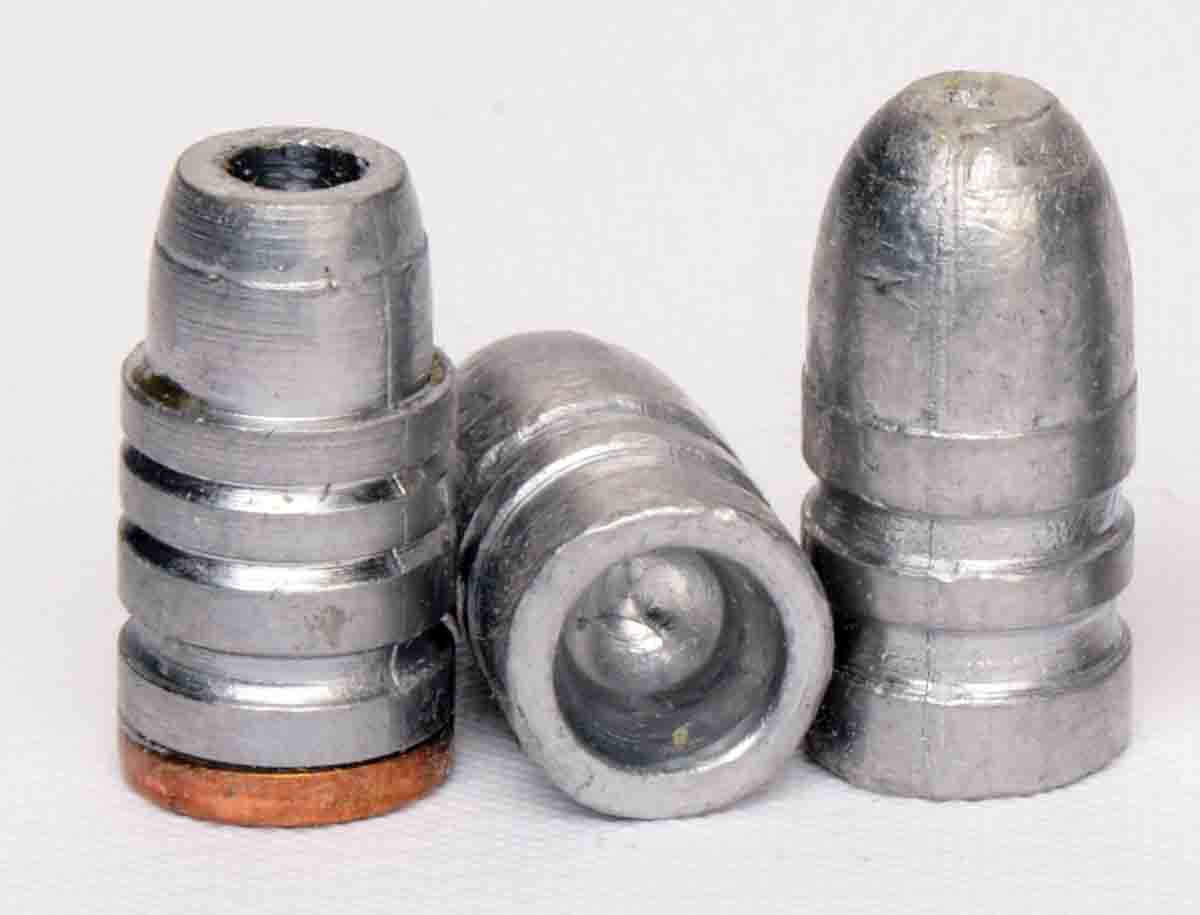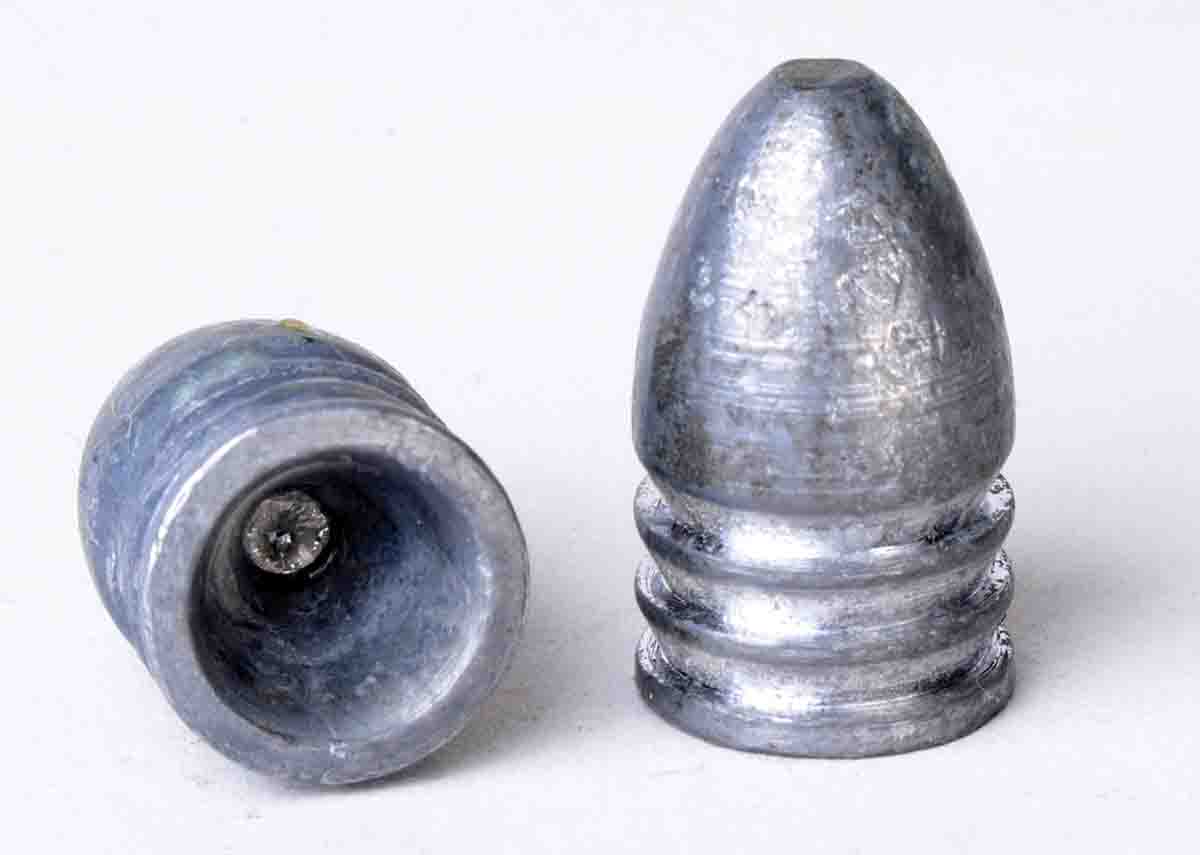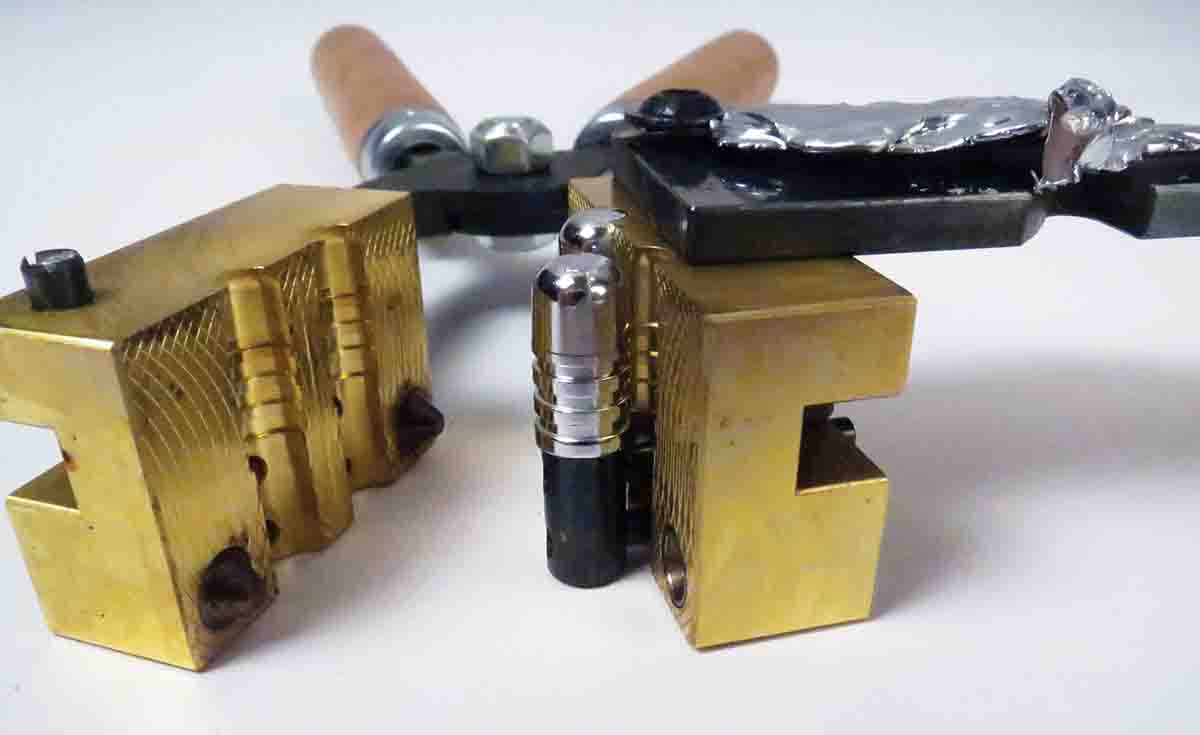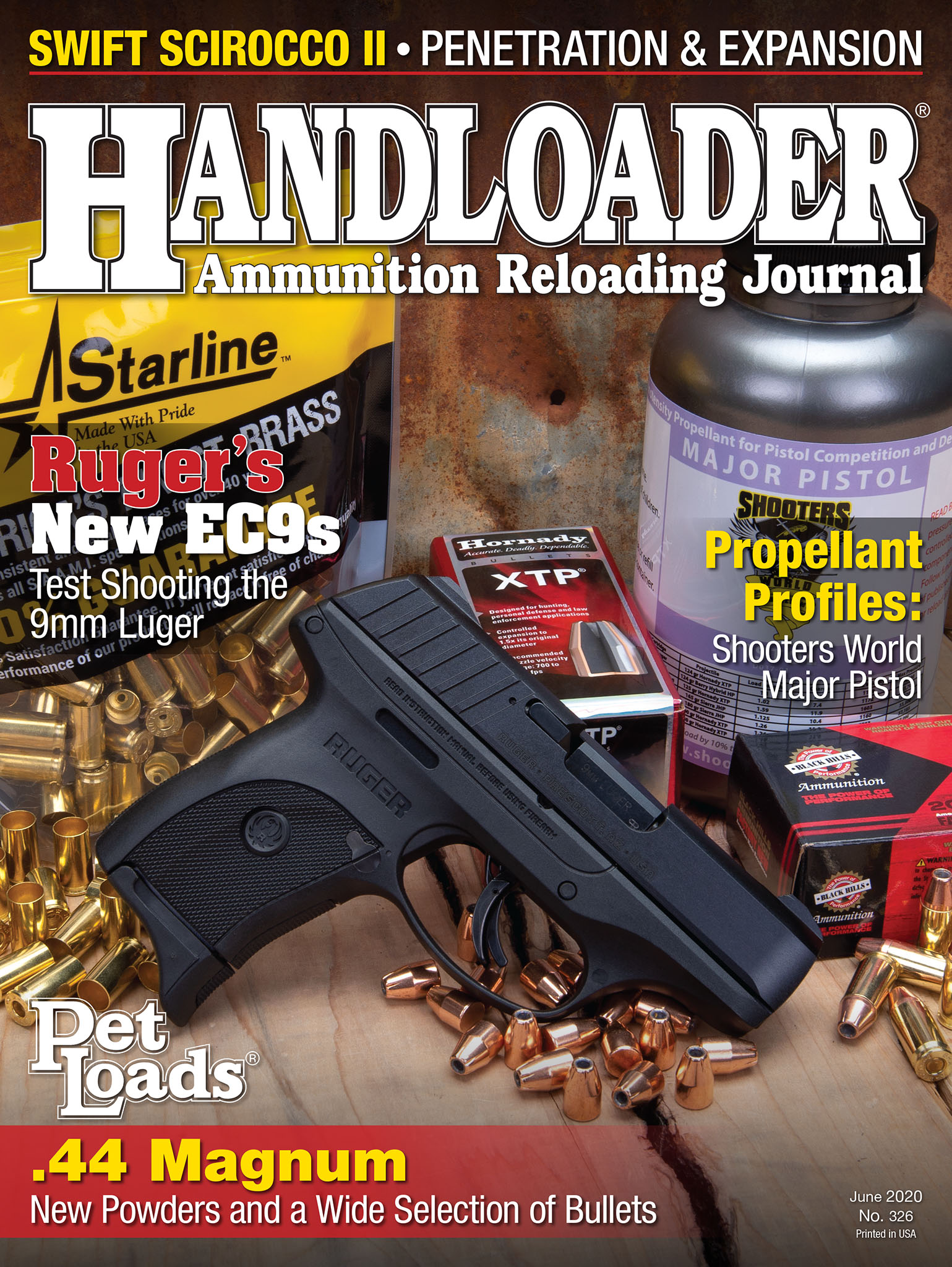Mike's Shootin' Shack
Casting Hollowpoint & Hollowbase Bullets
column By: Mike Venturino |

Somewhere along the way I had acquired a 5-foot length of hard, heavy 4x4-inch wood. A friend said it was Douglas fir. It was used for my first cast HP bullet “test.” Setting it on end, I backed off about 10 yards and let fly with a solid No. 358156 powered by 14.5 grains of 2400. Hit in its top 12 inches, the 4x4 wobbled for a second or two and then fell over. The SWC had penetrated completely. The second shot duplicated the first, except the 148-grain SWC-HP literally slammed that heavy piece of wood backward. It did not exit.
Convinced that cast HPs had a legitimate purpose, I then purchased Lyman’s No. 429244 mould in both solid and hollowpoint form. Admittedly, bullets from those HP moulds were only fired a modest amount at small varmints, but I wish both moulds were still with me. (The reason they are not is the reason I’m very leery of loaning bullet moulds.)

Back in those days, Lyman offered a variety of hollowpoint and hollowbase bullet moulds, but now in regard to HPs, Lyman’s catalog only lists one each for handguns in .38/.357, .44 and .45 and one .45 for rifles. Lyman HB moulds are for .54 and .58 Minié balls. The story is the same for other current major reloading tool manufacturers: some Minié ball moulds but none for hollowpoints. Until recent years, handloaders who needed hollowbase (HB) moulds could turn to Rapine Bullet Moulds, as I did in the 1990s when compiling information for my book SHOOTING SIXGUNS OF THE OLD WEST (wolfeoutdoor sports.com). I bought moulds for .38 and .41 Long Colt HB bullets. I still have and use the .38 HB mould No. 145-358HB, but Rapine is now out of business. Some custom mould makers such as Old West Moulds and Buffalo Arms do offer HP and HB moulds. Prices are understandably significantly higher than for solid bullet moulds.
The reason for the HP and HB moulds’ demise is the same reason I personally never cast many bullets from them. The moulds are all single cavity. Production is slow, even slower than with single cavity moulds for solid projectiles. At every cast, nose pins or base plugs must be fiddled with. Those pins/plugs can also be problematic. If they are allowed to cool, then wrinkles or pin holes form in either nose or base cavities. Keeping moulds, pins or plugs all hot means casting at a fast pace, which introduces another problem. If sprues are cut too soon, then lead smears buildup atop mould blocks and under sprue plates.
A second reason I think HP and HB bullet moulds have fallen by the wayside is the prevailing cast bullet attitude that “harder is better.” After 54 years of bullet casting, I now know for sure that “harder is only sometimes better.” For either HP or HB cast bullets (or swaged ones for that matter), bullets must be soft in order to do their job. Just about everyone knows that Minié balls for Civil War-era rifle muskets must be pure lead. They start out several thousandths undersize of a barrel’s groove diameter and rely on black powder’s explosion to expand the hollow base’s skirt so rifling is engaged.

Cast HP and HB bullets need not be pure lead. In fact, a small percentage of tin allows the alloy to cast better filled-out bullets than pure lead. Yet, the alloy must remain soft enough for HP noses or HB base skirts to expand. At low velocities, hard cast HP bullets do not expand. At high velocities, they fragment. Hard alloy HB bullets will not expand to grip rifling. They merely tumble in flight. For hollowpoint cast bullets soft alloys, say from 1:20 to 1:40 (tin-to-lead), will expand nicely at 800 to 900 fps. For higher speeds, some experimentation of alloy blends is required to pinpoint the exact tin-to-lead mixture for the desired velocity level. Over about 1,000 fps, a gas check HP design is usually preferable. There is a reason that Lyman’s No. 358156HP and No. 429244HP bullets have good reputations. Their gas checks help with the leading problem of soft, expandable lead alloys.
Recently, I found myself in need of a HB .41 Colt bullet mould. The Rapine version acquired nearly 25 years ago had been traded or sold along the way. Perusing the internet turned up nothing until a mention of a heretofore unknown to me outfit named MP Moulds. They were said to craft excellent HP and HB moulds. The company’s website indeed listed many HP/HB designs, among them one for a 200-grain .41 LC. What struck me was that MP Moulds had ingeniously figured out a manner by which HP and HB bullets could be cast in multiple cavity mould blocks. A double cavity .41 LC mould for .41LC HB bullets is in hand now and drops beautiful bullets. I’ll save the particulars of that mould and some other MP moulds for a future column.


